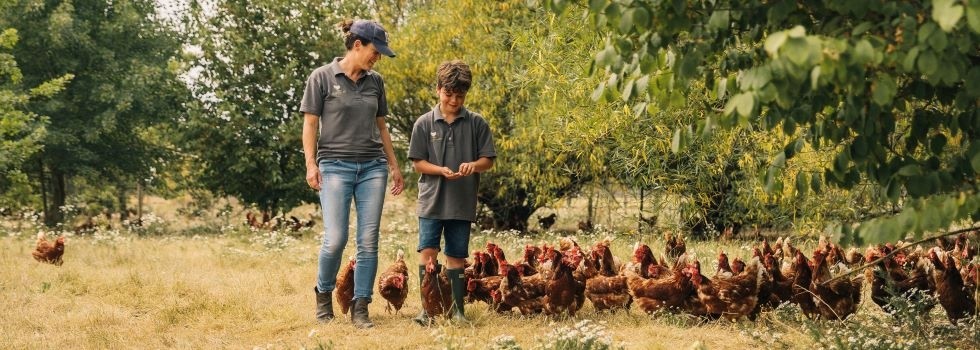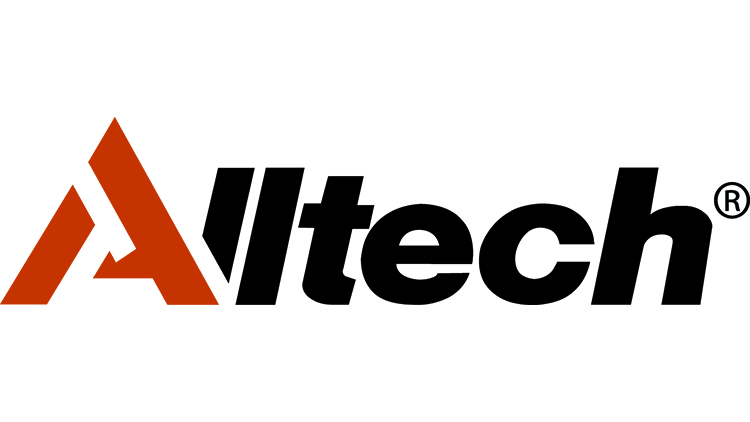Promotional Features
How to foster a healthy gut in poultry: Three defining elements for optimal gut health
To achieve optimal performance, proper welfare and a strong immune system, birds need a healthy gut.
There are three defining elements for optimal gut health: first, for the bird to be able to efficiently absorb nutrients and defend itself, it must have a good gut structure/morphology; second, the bird needs a highly diverse microbiota, which acts as a protective barrier; and third, the bird must have a strong immune system.
Nutrient absorption
Keeping a poultry production system profitable is becoming more challenging with the recent surge in production costs. Feed prices increased far above their historic prices in 2022, with up to 75% of the total production costs being attributed to the cost of feed. With this in mind, it is now more important than ever to improve the feed efficiency of birds to get the most out of the feed put in front of them.
To obtain the best-possible feed utilisation, birds must first be provided with optimal nutrition and need to establish good gut environmental conditions and enzyme activity, allowing nutrients to become available for absorption. The gut structures must also be well-formed to increase the surface area available for the absorption of nutrients.
An optimal gut morphology/structure allows for the efficient digestion and absorption of nutrients, improving feed conversion ratios (FCR) and allowing for better performance. McCaffrey et al. (2021) showed that Actigen can improve the villus height, surface area and crypt depth in broilers at 35 days.1 Having a higher villus and a larger surface area of the gut will increase the area available for nutrient digestion and absorption, allowing the bird to utilise the diet more efficiently.
The mucus layer also plays an important role as an area for the digestion and transport of nutrients to the site of absorption. McCaffrey et al. (2021) found that Actigen can improve mucus layer thickness and goblet cell density in broilers at 35 days. An increased mucus layer and goblet cell density will help with nutrient digestion and absorption, as secreted mucus assists with transport between the lumen and epithelial cells and fosters an environment where certain digestive processes can occur. It also protects the intestinal lining from damage caused by pathogenic activity, digestive processes and coarse dietary components.
When looking at gut health and integrity, we not only need to think about the pathogens that can damage the gut tissue but also about contaminants like mycotoxins that are present in the diets of birds and that can diminish the integrity of the gut. Mycotoxins can reduce performance and decrease the villus height and surface area. Even in a low-mycotoxin year, the additive effect of mycotoxins in different raw materials can affect the integrity of the gut, making the bird susceptible to pathogen invasion. Mycosorb A+ can protect the gut integrity from the negative effects of mycotoxins, as found by Weaver et al. (2020).2
Microbiota
The microbiota is comprised of bacteria, fungi, archaea, protozoa and viruses, and a diverse microbiota is essential for optimal bird production. The microbiota plays a vital role in the digestion and absorption of nutrients, as well as in pathogen control and the proper functioning of the immune system.
Pathogen control is not only important for reducing disease and tissue damage in birds but also for maintaining food safety and protecting human health. Establishing a healthy microbiota can help reduce the load of zoonotic pathogens. A positive relationship and interactions between the bird and its microbiota are essential for proper bird production, health and welfare, as the microbiota affects nutrition, physiology and gut development. A diverse gut microbiota can act as a protective barrier, reducing the attachment of pathogenic bacteria to the gut cell wall through competitive exclusion for space and nutrients and through the production of antimicrobial compounds. The diversity of the gut microbiota is affected by many factors, including the bird’s diet, environment and age, as well as any stressors the bird may face. These stressors can reduce the diversity of the microbiome and lead to enteritis and a build-up of pathogenic bacteria, resulting in the compromised functioning and performance of the bird.
To re-establish a normal, functioning microbiome, rehabilitation needs to occur to enhance microbiome diversity. Actigen can be used as a tool to increase the diversity of the microbiome. Corrigan et al. (2015 and 2018) found that Actigen can consistently impact caecal microflora diversity, with phylum Bacteroidetes appearing to replace phylum Firmicutes as a result of supplementation. Increases in the complexity of the microbiome have been associated with improved health, and increases in presence of the phylum Bacteroidetes have been associated with favourable outcomes. Controlling pathogens improves not only the health and welfare of the poultry but also the food safety of the product, and it has also been shown to reduce antimicrobial resistance.
Increasing the diversity of the microbiome shifts the balance to more beneficial bacteria, which produce compounds – like short-chain fatty acids (SCFA), vitamins and antimicrobial compounds – that can be used by the gut. Actigen has been reported to stimulate the production of the SCFA butyrate by influencing the microbiome (Corrigan et al., 2019). SCFA can be used as an energy source, can decrease the gut pH and can have bacteriostatic properties that reduce foodborne pathogens, such as Salmonella spp. Reducing the pH of the gut environment promotes the growth of beneficial bacteria that like acidic conditions and can inhibit the growth of harmful bacteria, which prefer an alkaline environment. Girgis et al. (2020) found that Actigen works to stop the invasion process and improve food safety by significantly reducing the presence of Salmonella in the caecal content of layers and decreasing the prevalence of Salmonella in their ovaries.
When considering the microbiota and the food safety of poultry, one huge public health issue that cannot be overlooked is antimicrobial resistance (AMR). Recent research has also shown that not only is Actigen able to bind pathogenic bacteria, but it can also reduce the prevalence of AMR amongst E. coli isolates and enterococcus colonies (Parker et al., 2019).3 Actigen has also been shown to be correlated with a greater reduction in the number of isolates that are resistant to antibiotics when compared to a control (Parker et al., 2019). This could serve as a great tool in the continued fight against AMR. Further work carried out in this area showed that Actigen can affect the cellular respiration of bacteria, enhancing the sensitivity of bacterial strains to antibiotics (Smith et al., 2020 and 2022).4
Immunity
A large percentage of the bird’s immune system lives within the gut — which means that if the bird has a healthy gut, it will also have a strong immune system, allowing the bird to defend itself against pathogens.
Birds have three lines of immune defences, which fall under two categories:
- Innate immunity The nonspecific system an animal is born with that makes up the first and second lines of defence.
- Acquired immunity A specific cellular and molecular response to a particular pathogen developed during the animal’s life, which forms the third line of defence.
These systems aid in protecting and maintaining animal health, working together to provide protection against pathogens.
The innate immune system – which includes the gut cell wall, the mucus layer and the microbiota – is the body’s first line of defence. The innate immune system works to block pathogens and foreign materials from entering the body. Actigen is able to support the first line of defence, as highlighed above. The innate immune system also includes the second line of defence against pathogens, which is a non-specific response. The third line of defence against pathogens is part of the acquired immune response.
For more details, read Alltech’s white paper on immunity, which highlights the importance of the three lines of defence and shows how Alltech solutions can help develop and maintain the bird’s immune system.
References
1. McCaffrey C.; Corrigan A.; Moynagh P.; et al (2021). Effect of yeast cell wall supplementation on intestinal integrity, digestive enzyme activity and immune traits of broilers, British Poultry Science, 62:5, 771-782, DOI: 10.1080/00071668.2021.1929070.
2. Weaver A.C.; King W.D.; Verax M.; et al. Impact of Chronic Levels of Naturally Multi-Contaminated Feed with Fusarium Mycotoxins on Broiler Chickens and Evaluation of the Mitigation Properties of Different Titers of Yeast Cell Wall Extract. Toxins (Basel). 2020 Oct 1;12(10):636. doi: 10.3390/toxins12100636. PMID: 33019707; PMCID: PMC7599674.
3. Parker J.; Smith H.; A Corrigan A.; et al (2019). Effects of dietary mannan-rich fraction on microbial populations in broiler chickens. 6th Conference on Poultry Intestinal Health, Rome, Italy April 3-5, 2019.
4. Smith H.; Grant S.; Parker J.; et al (2020). Yeast cell wall mannan-rich fraction modulates bacterial cellular respiration potentiating antibiotic efficacy. Scientific Reports. 2020 Dec 14;10(1):21880.





